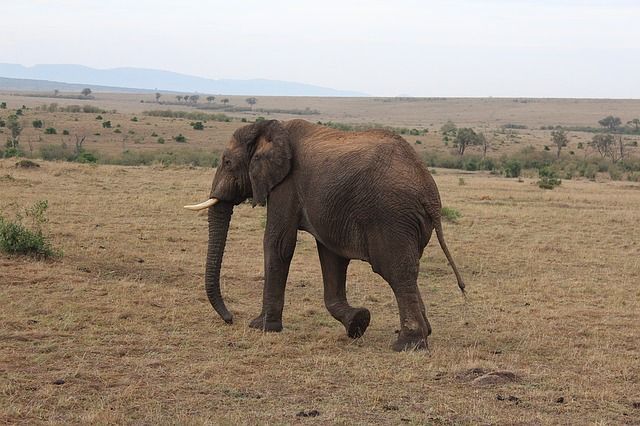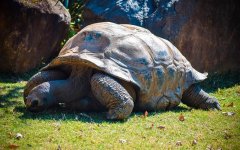Description of Flavor and aroma of Solar AA Coffee in Karimiko, Kenya

For professional baristas, please follow the coffee workshop (Wechat official account cafe_style)
Kenya Karimikui Natural AA
Sun exposure is less common on the market in Kenya, probably because of the excellent quality of Kenyan water washing, coupled with the sun loss rate, and the high labor costs that have been found in Kenya in the past only in the special customized programs of some American bean merchants. For example, Caf é Import's Ace trump card project has produced several sunburns on the French missionary bourbon. But the quality has always been unsatisfactory, there are many defective beans, and the flavor is not as rich as that of Ethiopian sun-dried beans, but the price is comparable to Ninety Plus Tchembe.
This batch of Kenya is the batch of soybean merchants Y. It is rare that this batch of beans is Kenya's signature SL28 & SL34. Because it is a bean seed that has been produced in large quantities for many years, the price is much more beautiful compared to the French missionary Bourbon, who has little production. Although the Kenyan government has recently actively promoted Ruiru varieties with stronger disease resistance and excellent quality, SL28 and SL34 are still the main local production varieties. According to raw bean merchants, cup test flavors include tropical fruits, bright acidity, berries, and excellent cleanliness.
This time, 330g was tested, and when you open the package, you can smell the strong fermentation fragrance, and the fermentation technology is quite good. But as soon as I poured it out, I saw a big stone with a diameter of 1.5CM. Although raw bean merchants in the purchase of the first vaccination that fruit, cotton thread and other foreign bodies will cause some trouble, but still scared by the stone. Sampling 100g, deducting the big stone, defective beans account for about 8g. Mostly damaged, fruit, and shell beans.
Because of the small amount, the input temperature dropped to 150 degrees, and the temperature recovery point fell at about 84 degrees. Because it was a new bean with a visual water content of about 10%, the heating rate was stable, about 12 minutes and 45 seconds under 200.8 degrees, and the weight was about 282g after deducting the worn out. After picking out the shell, it should lose another 8 g.
The actual test flavor, dry aroma with a combination of tropical fruit and some berry aromas, the entrance is a clear fruit aroma, accompanied by lemon-like sweet and sour, the finish is an increase in the sweetness of fruit juice and fruit wine fermentation aroma. Objectively speaking, it is a good bean, but the defect rate is a little high. Its treatment is a bit similar to the Central American sun, which reminds me of the Sun Eye in Guatemala last year. If the defective bean ratio can be improved, it will be a very valuable coffee.
Important Notice :
前街咖啡 FrontStreet Coffee has moved to new addredd:
FrontStreet Coffee Address: 315,Donghua East Road,GuangZhou
Tel:020 38364473
- Prev

Description of flavor and flavor of Ethiopian washed Yega Xuefei "Wonderland Paradise" coffee
For the exchange of professional baristas, please pay attention to the coffee workshop (Wechat official account cafe_style) Ethiopia Yirgacheffe village Gedeo Zone Washed G1 Paradise S teacher's beans have always been highly appraised in foreign coffee evaluation websites, and the items they have drunk and bought in the past also have a high level. Although the price is too high, as long as the baking is not too bad.
- Next

Description of coffee flavor and taste in Galapagos Islands, Ecuador
Professional baristas please pay attention to the coffee workshop (Wechat official account cafe_style) Ecuador Galapagos Islands Ecuador is not a major coffee producing country, although located in the coffee belt, but the geographical environment is more suitable for cocoa cultivation. Therefore, Ecuador's beans are not common. Usually, the coffee items that can still survive in this kind of country are trump cards, such as teeth.
Related
- Detailed explanation of Jadeite planting Land in Panamanian Jadeite Manor introduction to the grading system of Jadeite competitive bidding, Red bid, Green bid and Rose Summer
- Story of Coffee planting in Brenka region of Costa Rica Stonehenge Manor anaerobic heavy honey treatment of flavor mouth
- What's on the barrel of Blue Mountain Coffee beans?
- Can American coffee also pull flowers? How to use hot American style to pull out a good-looking pattern?
- Can you make a cold extract with coffee beans? What is the right proportion for cold-extracted coffee formula?
- Indonesian PWN Gold Mandrine Coffee Origin Features Flavor How to Chong? Mandolin coffee is American.
- A brief introduction to the flavor characteristics of Brazilian yellow bourbon coffee beans
- What is the effect of different water quality on the flavor of cold-extracted coffee? What kind of water is best for brewing coffee?
- Why do you think of Rose Summer whenever you mention Panamanian coffee?
- Introduction to the characteristics of authentic blue mountain coffee bean producing areas? What is the CIB Coffee Authority in Jamaica?

